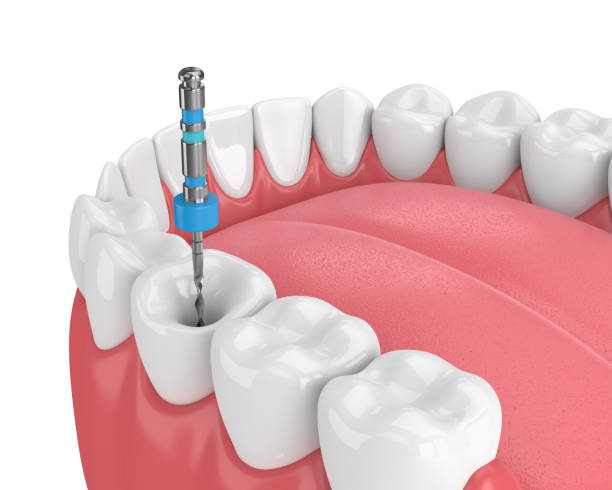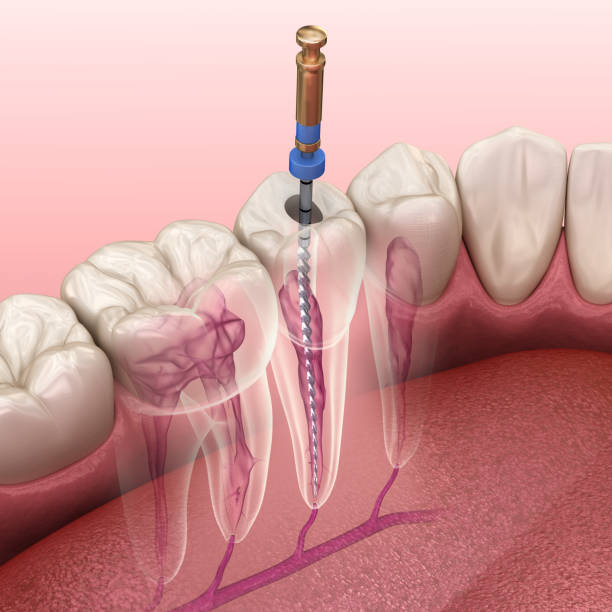Introduction
Endodontics is a branch of dentistry that deals with the diagnosis, prevention, and treatment of diseases and injuries that affect the dental pulp and the surrounding tissues of the tooth.
Who are the candidates of Endodontics treatment?
The candidates for endodontic treatment, also known as root canal treatment, are individuals who have problems with the innermost layer of their teeth called the dental pulp. These problems can include severe tooth decay, tooth infections, tooth trauma, or irreversible damage to the pulp. Endodontic treatment is typically recommended for individuals experiencing tooth pain, sensitivity to hot and cold, swelling around the tooth, or abscess formation.
What does the Endodontics do?
Endodontics focuses on the diagnosis and treatment of diseases and disorders related to the dental pulp and surrounding tissues. It involves procedures such as root canal therapy, which is the removal of infected or damaged pulp from inside the tooth, and subsequent cleaning, shaping, and filling of the root canal system. The goal of endodontic treatment is to save natural teeth and alleviate pain or discomfort caused by dental pulp infections or injuries.
What steps are followed in Endodontics treatment?
The steps followed in endodontic treatment (also known as root canal treatment) typically include the following:
-
Initial examination:
1
The dentist examines the tooth and takes X-rays to assess the condition of the tooth and surrounding structures.
-
Anesthesia:
2
Local anesthesia is administered to numb the area around the tooth, ensuring a painless procedure.
-
Isolation:
3
A rubber dam is placed around the tooth to keep it clean and dry during the procedure.
-
Access opening:
4
The dentist creates an opening in the tooth to gain access to the pulp chamber and root canals.
-
Pulp removal:
5
The infected or damaged pulp tissue is carefully removed from the pulp chamber and root canals using specialized instruments.
-
Cleaning and shaping:
6
The dentist uses small files to clean and shape the root canals, removing any remaining infected tissue and preparing them for filling.
-
Irrigation:
7
The root canals are flushed with a disinfecting solution to remove debris and disinfect the area.
-
Obturation:
8
The cleaned and shaped root canals are filled with a biocompatible material called gutta-percha and a dental sealer to seal the canals and prevent re-infection.
-
Final restoration:
9
After the root canal treatment, the access opening in the tooth is filled and sealed with a temporary or permanent filling. In some cases, a dental crown may be necessary to protect and strengthen the treated tooth.
-
Follow-up:
10
The patient is typically advised to schedule a follow-up appointment to monitor the healing process and ensure the success of the treatment.
What are the advantages of Endodontics?
The advantages of endodontics, which is a branch of dentistry focused on treating the pulp and root canals of teeth, can be summarized as follows:
-
Tooth preservation:
Endodontic treatment aims to save the natural tooth by removing infected or damaged pulp tissue, cleaning the root canals, and sealing them. This helps to preserve the tooth's functionality and appearance.
-
Pain relief:
Endodontic procedures are performed to alleviate toothache caused by pulp inflammation or infection. By removing the source of pain and treating the underlying issue, endodontics can provide significant pain relief.
-
Improved oral health:
By saving the natural tooth, endodontics helps to maintain proper dental function, such as chewing and speaking, and preserves the alignment and balance of neighboring teeth. This contributes to overall oral health and prevents the need for more extensive dental interventions like extractions or replacements.
-
Aesthetics:
Endodontic treatment preserves the natural appearance of the tooth, ensuring a harmonious smile. This is especially important for teeth in visible areas of the mouth, as it helps maintain a pleasing aesthetic appearance.
-
Cost-effective:
Compared to tooth extraction followed by prosthetic replacements like dental implants or bridges, endodontic treatment is often a more cost-effective option. Saving the natural tooth through endodontics can eliminate the need for additional procedures and associated expenses.
-
Long-term solution:
With proper care, endodontically treated teeth can last a lifetime. By maintaining good oral hygiene practices and regular dental check-ups, patients can enjoy the benefits of their treated tooth for an extended period.

